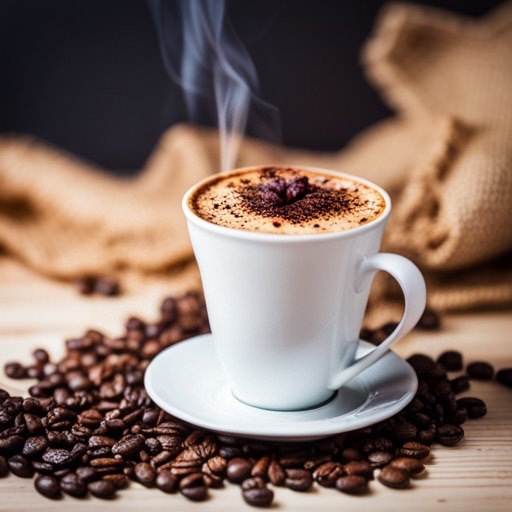“Whoa, this coffee really packs a punch!” or “This coffee is like a jolt of electricity!” are comments we often encounter. So, I decided to delve into the factors that shape the character of a cup of coffee. The flavor and caffeine kick of your coffee are determined by a variety of factors such as the duration of the brewing process, the fineness or coarseness of the ground beans, the specific bean variety chosen, and the steeping time. Let’s break down the influence of each of these elements on the final cup of coffee:
Length of the brewing process: A shorter brewing process tends to produce a lighter-bodied coffee, whereas a longer brewing process can extract more flavors (including potentially bitter ones), leading to a more full-bodied and stronger taste. As for caffeine, a longer brewing process will usually extract more caffeine. However, there is a saturation point after which no more caffeine is extracted.
Coarseness of the grind: The size of the coffee grounds plays a significant role in extraction. A finer grind has more surface area exposed to the water, which can lead to more flavor and caffeine being extracted quickly. However, it can also lead to over-extraction, which may make the coffee taste bitter or harsh. Conversely, a coarser grind extracts flavor and caffeine more slowly, which can lead to under-extracted coffee if not brewed for long enough. Under-extracted coffee may taste sour or weak.
Type of beans*: There are several species of coffee, but the two most commonly used for coffee are Arabica and Robusta. Arabica beans are generally more delicate with a wide range of flavors, while Robusta beans are more robust and have a stronger, more bitter flavor. Robusta beans also have about twice the caffeine of Arabica beans.
Steeping time: This refers to the amount of time that the water is in contact with the coffee grounds. Similar to the length of the brewing process, longer steeping times can lead to more extraction of flavors and caffeine. But if the steeping time is too long, the coffee can become over-extracted and taste bitter. Shorter steeping times can result in under-extracted coffee, which may taste weak or sour.
* I thought the type of beans needed more info so if your interested here is additional facts to help you decide on your bean choice impacting the taste and impact coffee your making.
Arabica is the most commonly used type, accounting for about 60-70% of global coffee production. Arabica beans are generally considered to be of higher quality compared to Robusta. They are grown in higher altitudes, often on hillsides, and require a very specific climate with steady temperatures between 60-70°F (15-24°C). The beans are oval in shape and tend to have a sweeter, softer taste, with tones of sugar, fruit, and berries, as well as a higher acidity. Because they are more difficult to grow and have a more nuanced flavor profile, Arabica beans are often more expensive.
Robusta is the second most popular type of coffee bean. They are easier to cultivate, as they are resistant to pests and diseases, and can be grown in a wider variety of climates, often at lower altitudes than Arabica. Robusta beans are more circular in shape, and their flavor is stronger, often described as nutty or grainy, with a more earthy or woody aftertaste, and they have less acidity but more bitterness. They also contain about twice the caffeine of Arabica beans, which contributes to their more bitter taste and also makes them a natural deterrent to pests.
Besides these two, there are other species like Coffea liberica and Coffea excelsa, but they represent only a small fraction of global coffee production.
Additionally, the processing method (wet, dry, or semi-washed), the roast level (light, medium, or dark), and the origin of the beans (which can affect soil composition, temperature, rainfall, and altitude) all play significant roles in the flavor profile of the coffee.
In general, the choice between Arabica and Robusta (or a blend of the two) depends on personal preferences. If you prefer a smoother, more balanced and complex flavor, you might favor Arabica. If you’re after a stronger, more robust coffee with a higher caffeine content, then Robusta could be your choice. However, it’s worth noting that not all Arabicas are superior to Robustas. The quality can greatly depend on the specific variety, how it’s grown, harvested, processed, and roasted.
All of these factors all play a role in balancing the flavor and caffeine content of coffee. Finding the right combination of these variables to suit your personal taste preferences can take some trial and error. Remember, coffee brewing is as much of an art as it is a science.
Please note that if you purchase from clicking on the link, some will result in my getting a tiny bit of that sale to help keep this site going.

